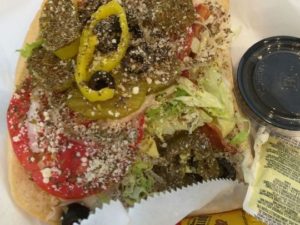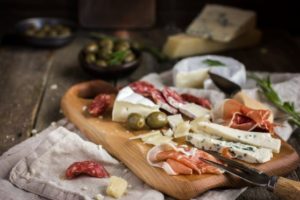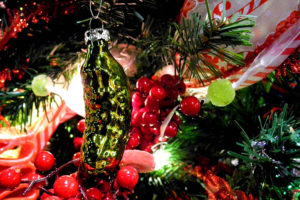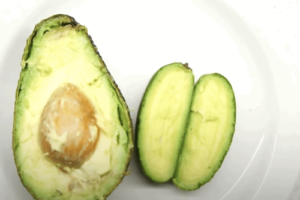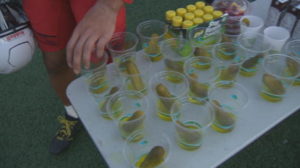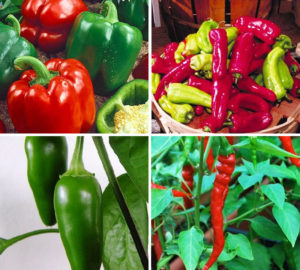By Susanna McLeod, Kingston Whig-Standard
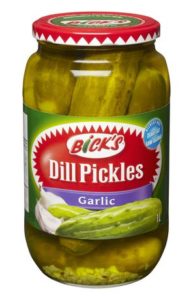
Aboard the ocean liner RMS Empress of Britain in the summer of 1939, the family from Holland breathed a sigh of relief. The horrors of what became the Holocaust were vanishing into the distance. The palpable threat by Hitler to Jews made life impossible in Europe, and they fled. Now the calm of Canada lay ahead, a place of safety and hope. And for the Bick family, an unexpected and prosperous future awaited — in pickles.
Landing at Quebec City on Aug. 15, 1939, George and Lena Bick and their adult children made their way to Montreal and then on to farm property north of Toronto. The urban-dwelling family temporarily tucked away their dearth of farming skills and indications of their Jewish faith. They pretended they were Christians and farmers so they could satisfy requirements to obtain 117 acres of Scarborough land.
“It was the law to be farmers for a year. But we were city people,” son Walter Bick was quoted by Genevieve Susemihl in -¦and it became my home: The Assimilation and Integration of German-Jewish Hitler Refugees” (LIT Verlag Munster, Bd. 21, 2004.) The Bick family “did everything ourselves. We learned how to milk cows “¦ [for fresh milk and to fill industrial contracts for ice cream, cheese and butter].” The industrious team “grew grain, oats, barley, and fall wheat, and then after 1943 we started growing vegetables, cauliflower, and cabbage.”
In 1944, 10 acres were planted with cucumber seeds to provide the field vegetable to the Rose Brand pickle company. The firm did not want the full harvest, and the Bicks were left, um, in a pickle, so to speak, with a lot of cucumbers on their hands. Conditions were perfect that year for growing an unusually large bounty. They had to think of something fast or the cucumbers would rot on the vines. It was time to ferret out their grandmother’s old family recipe for pickles.
Wasting not another moment, the cucumbers were picked, processed in brine, vinegar and spices, and packaged by hand. Purchasing 200 containers from the nearby Pepsi facility, the Bicks “made the pickles in 50-gallon barrels,” said Denzil Green at Cook’s Info. Stored in the barn to cure, the family “started selling them to restaurants and army camps by the barrel.”
There was a learning curve to be navigated, according to Walter and Jeanny’s son Robert Bick to Katie Daubs in “Bick’s Pickle Co-Founder Dies” (The Star, Oct. 21, 2011). “A food inspector came by and said, ‘Walter, if you’re packing food you can’t have animals in the barn, too.” The animals were moved to another barn, and Walter Bick headed to Michigan to study food technology.
Expanding the sales of their scrumptious pickles to prominent locations such as the Royal York Hotel and finer restaurants, the Dutch farmers then added department stores to their client list. Once farming techniques were down pat, the Bicks proved capable entrepreneurs, well appreciated by their new Canadian homeland.
Sales of the crisp green snack soared. The farm animals were sold off and the appetizing Bick’s pickle became the family’s bread and butter. The area around them was prospering as well. Highway 401 cut through the middle of the farm property and now Scarborough Town Centre sits nearby.
Seven years on, Bick’s boosted its production by packaging the pickles in smaller containers for home enjoyment. Using glass jars in 473 ml, 710 ml and 946 ml sizes, the family still worked with little machinery. Pasteurizing, brining, adding dill and other spicing, and screwing on lids to jars — the hard work continued to be accomplished by hand. There were more than just a few hundred containers to fill: Bick hands prepared 60,000 glass jars in the first year of packaging pickles for the grocery store market.
“Soon after, the business expanded into a renovated barn on their farm,” according to Mark Kearney and Randy Ray in “I Know That Name!” (Hounslow/Dundurn, Toronto 2002), “and Canada’s fastest-growing manufacturer of pickles and relishes was on its way to leadership in the Canadian pickle business.” As unfortunately happened to many manufacturers, production was abruptly halted when the barn burned down in 1958. From the ashes quickly rose a new purpose-built factory, and Bick’s was back in production.
Walter Bick made sure to visit every store that sold his company’s pickles. Building a premium-quality brand, “he ensured that a prominent graphic designer created the iconic label,” Daubs stated. The Bick’s label remains a eye-catching colourful statement, easily recognized on grocery store shelves.
The market for delicious Bick’s pickles sky-rocketed. “In 1960 Bick’s sold 12 million jars of products,” according to Green. “At the time, they were producing 33 varieties of pickled products, including pickled onions, gherkins and relishes including their Sweet Pickle Relish.” To celebrate the company’s 10th anniversary, a special pimento-stuffed gherkin was announced.
By the mid-1960s, the processing plant had blossomed to employ more than 120 staff in summer and 65 in winter, growing beyond the Bick family’s capacity to operate. Bick’s Pickle was sold in 1966 to the Robin Hood flour company. Everything Bick went in the sale — the factory, the farm property and even the Bick house, then home to Walter, his wife, Jeanny, and their family.
Walter Bick remained with the firm under its new owners for several years. He did not relish the corporate life. On leaving his post, Walter Bick was able to volunteer time to other organizations. The businessman participated in the founding of “the Jewish Vocational Services, an organization that helped Jewish people find jobs, which, he later remarked, was a lot harder than selling pickles,” Daubs noted.
In 2004, American food giant J.M. Smucker Company of Orrville, Ohio, purchased International Multifoods, the parent company of Robin Hood and its subsidiaries, including Bick’s. The Canadian Bick’s operations in Dunnville and Delhi, Ont., were closed at the end of 2011 and moved to Wisconsin. About 150 plant jobs and hundreds of seasonal jobs were gone, not to mention the loss to local farmers who were supplying cucumbers to the pickle company.
Walter Bick died at age 94 on Oct. 17, 2011, having lost his beloved Jeanny 10 years earlier. Younger brother and company co-founder, Thomas Bick, died on Feb. 11, 2017, also age 94. Walter Bick is credited with instituting the “fresh pack” system in the 1950s, meaning “to pack green cucumbers into containers within 24 hours of being picked,” the Bick’s company said. “They are then covered with a pickling solution that contains vinegars and/or sweeteners, flavourings and other ingredients” for “an unusually crunchy and delicious pickle.”
Although his life was spent in the manufacture and promotion of pickles, it seems Walter Bick didn’t particularly care for the tangy snack, his grandson Robert Bick mentioned to Daubs. “He used to have to sample them with customers and would sometimes grimace.” But that’s a pickle of a different nature.”
Susanna McLeod is a writer living in Kingston. This week she is delighted to celebrate 22 years of contributing to The Kingston-Whig Standard. Thank you, dear readers, and Happy New Year!
